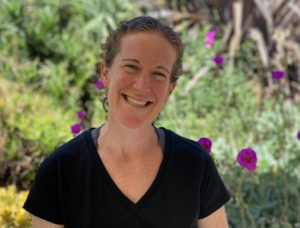Can Piedmont Add 587 New Housing Units? Council Action?
IMPORTANT DECISION ON ADDITIONAL HOUSING BY PIEDMONT CITY COUNCIL JUNE 21.
AGENDA DETAILS: SCHEDULE AND PARTICIPATION
The Piedmont City Council has for many months strongly and philosophically supported the ABAG (Association of Bay Area Governments), allocation of 587 new housing units for Piedmont between 2023 -2031. The allocation is referred to as RHNA (Regional Housing Needs Assessment).
Moving ahead of the schedule, in May the Piedmont City Council approved $691,230 for Consulting Services with Lisa Wise Consulting, Inc.,to plan for acceptance of the 587 new housing units. As Councilmember Cavanaugh opined, Piedmont should be preemptive and not wait until 2023 to start efforts to accommodate these new units.
While numerous cities have appealed their particular allocation of new housing units, the Piedmont City Council has been steadfast in planning for and accepting 587 new housing units. By 2023 when the 587 new housing units are required to be in place, the current City Council members will no longer be in office.
To achieve this significant increase in housing units could require rezoning properties, adding more multiple housing areas, building housing in City parks and properties, dividing existing parcels into smaller parcels, condemnation of private property, reconfiguration of streets, adding new services, etc.
City Staff and Council unite against appealing required 587 additional housing units allocation.
July 9, 2021 deadline: the RHNA Appeal deadline, is fast approaching.
The May 25, 2021 release of the suggested 2023 -2031 RHNA allocations initiated the period in which a local jurisdiction or Housing and Community Development (HCD) can submit an appeal to ABAG requesting a change to any Bay Area jurisdiction’s allocation. Piedmont has no plans to appeal. The City Council and staff intend to accept the 587 new housing units in Piedmont between 2023 and 2031.
Key dates in the RHNA Appeal process are:
May 25, 2021: official release of draft RHNA allocations.
July 9, 2021: deadline for a jurisdiction or HCD to submit an appeal of a jurisdiction’s draft allocation.
August 30, 2021: deadline for comments on appeals submitted.
September and/or October 2021: ABAG conducts public hearings to consider appeals and comments received.
October or November 2021: ABAG ratifies written final determination on each appeal and issues final RHNA allocations that adjust allocations as a result of any successful appeals.
November or December 2021: ABAG Executive Board conducts public hearing to adopt Final RHNA Plan.
The ABAG website provides more information about the appeals process. The ABAG 2023-2031 RHNA Appeals Procedures includes details about the statutory requirements for the appeals process and how ABAG will conduct the public hearing to consider appeals. In the event an appeal is approved and a jurisdiction’s RHNA is lowered, the net difference in units are allocated proportionally to other jurisdictions across the region. Thus, a jurisdiction may see its RHNA increase as a result of other appeals (if they are successful).
STAFF RECOMMENDATION IS TO ACCEPT PIEDMONT’S 587 ADDITIONAL HOUSING UNITS or RHNA.
As noted in the Executive Summary, City staff recommends that no appeal of the RHNA should be filed and that the City accept the RHNA assigned to Piedmont. Although City staff raised concerns during the development of the RHNA methodology, these concerns do not form the legal basis to appeal Piedmont’s RHNA. As explained in this report, an appeal would only be considered on the three possible grounds per Government Code Section 65584.05. In staff’s assessment, the case for an appeal is unlikely to be meritorious, including because ABAG possesses fairly significant discretion in deciding appeals under the law. Staff’s assessment that an appeal would unlikely prevail are also based on the following considerations:
the approved RHNA methodology is not related to a jurisdiction’s capacity to accommodate growth under its current zoning limits or City Charter;
the approved RHNA methodology does not adjust a jurisdiction’s allocation based on natural hazards such as fire, flood, or landslides; Agenda Report Page 4 of 33
the record for appeals filed in other regions, such as the Southern California Association of Governments (SCAG), shows that an appeal is likely to fail.
In the SCAG region, which includes Los Angeles, Orange and Riverside Counties, 49 jurisdictions appealed their much larger RHNA assignments. Of the 47 appeals that continued to hearing, only two were partially approved. In the SANDAG region (San Diego) Council of Governments, there were four appeals filed out of the 18 cities in the region. One appeal was partially granted and the other three appeals were denied; and
the RHNAs for other jurisdictions throughout California, including the San Francisco Bay Area (in the ABAG region), are all significantly higher than in years past, and ABAG member jurisdictions are unlikely to be swayed by any arguments made by a jurisdiction’s officials to lower its RHNA and reallocate the units to other jurisdictions.
Piedmont’s Contract City Attorney, Michelle Kenyon, “concurs with staff’s assessment regarding the City’s likelihood of success in pursuing an appeal, given all of the aforementioned legal and practical factors and reasons outlined herein.”
Read the full staff report below:



